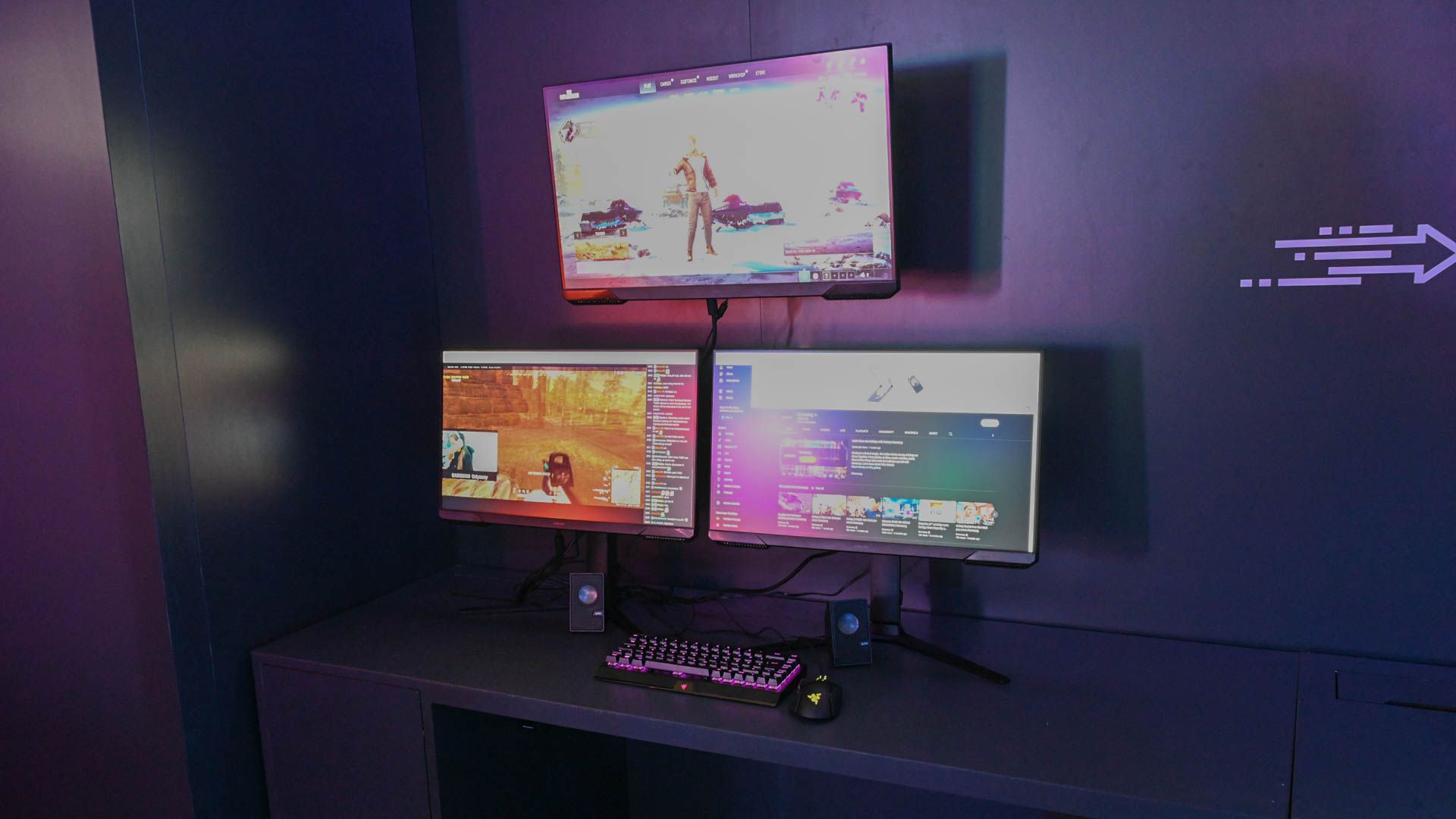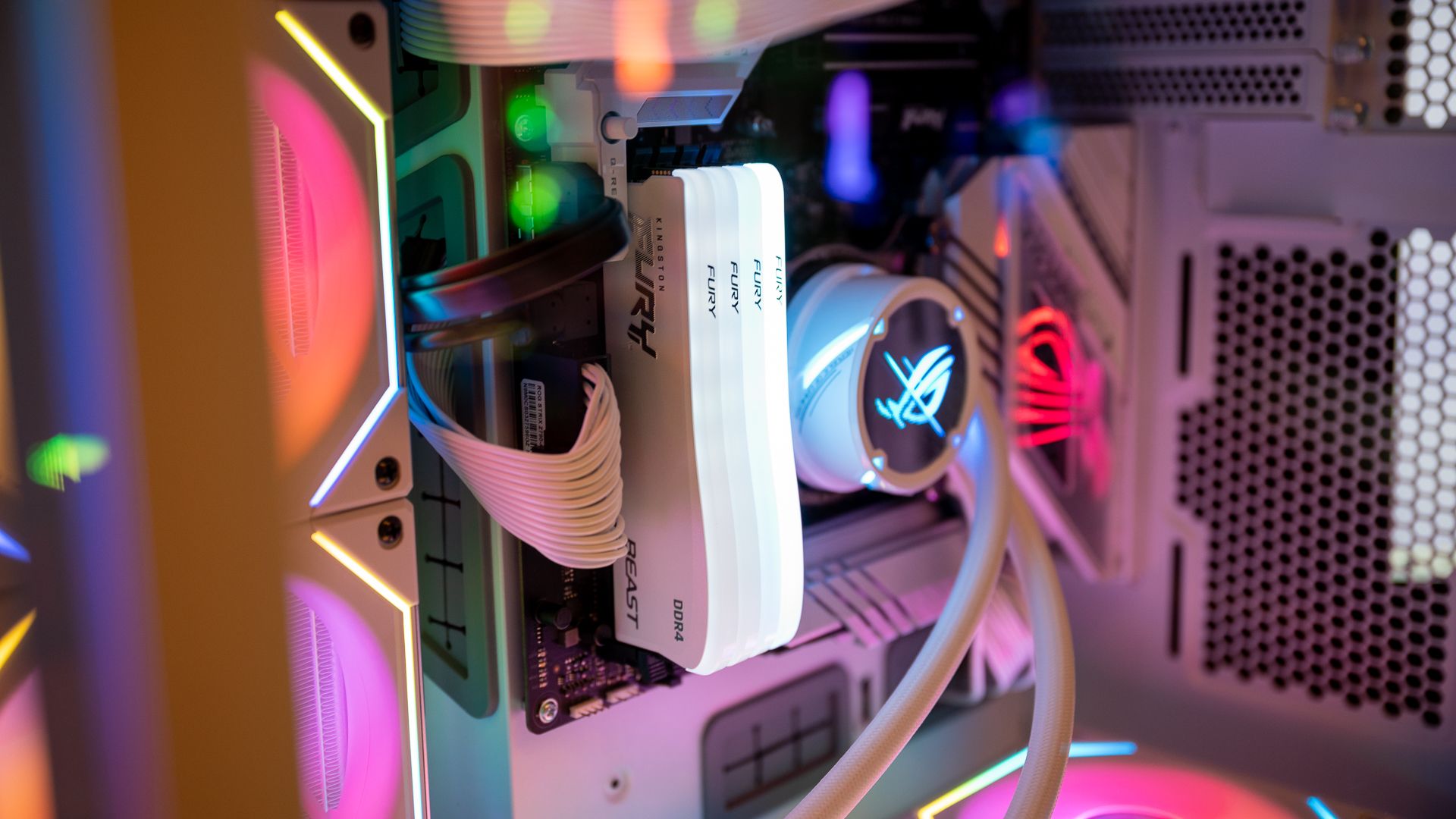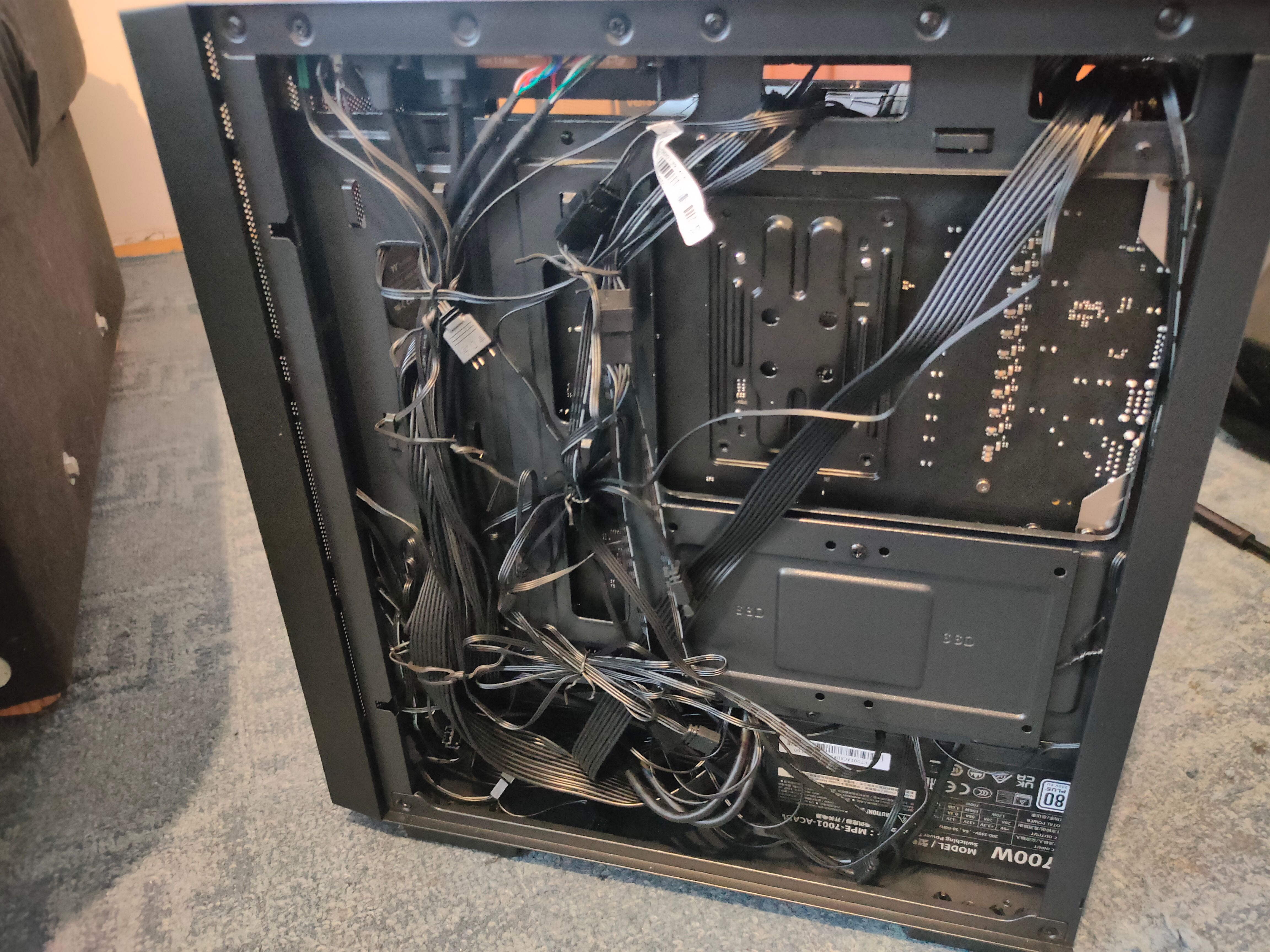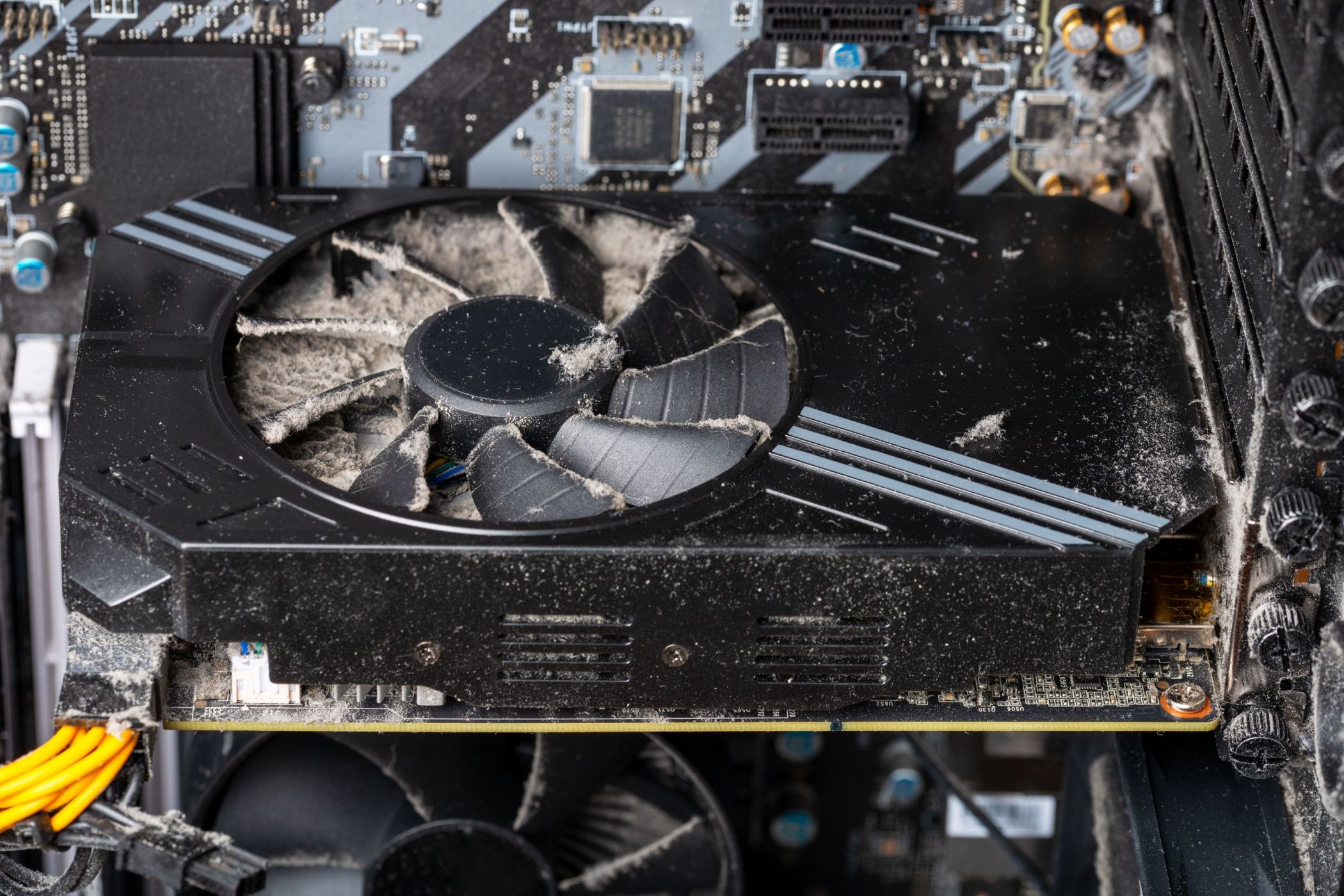Many of us love to show off our PC build, proudly placing them on our desks to admire the hard work. However, a full-tower PC also takes up valuable desk space, so why not mount it to the wall instead?
More Desk Space
Depending on how large your desk and PC are, a full tower case can easily take up 20–30% of your workspace. This leaves little room for multiple monitors, large speakers, a microphone, extra peripherals, and everyday items on your phone and wallet. It also makes it harder to use the desk for other tasks like doing paperwork or gadget repairs, as the available space is even more limited.
By mounting your enormous PC to the wall, you not only regain valuable desk space, but it also becomes more usable. Standard desktop PCs with tempered glass windows are typically placed on the right, so wall-mounting the PC makes room for a third or fourth monitor, a boom-arm mounted mic, or huge studio speakers.
Wall-mounting your PC also contributes to a clean, modern desk aesthetic. With wireless peripherals and a couple of monitors, it’s a minimalist’s dream. Maybe that’s why mini PC setups are so popular.
Showcase Your Build
Are you tired of standard PC cases that all look the same? There are countless variations of the same large, rectangular box with RGB fans on the front and a tempered glass side panel. Some break the mold by featuring tempered glass on the front or incorporating a display, but they still aren’t easily mistaken for anything other than a PC.
Now, compare that to a wall-mounted PC—which looks more like a futuristic work of art. If you spend a lot of money on your high-end hardware, you want to show it off, and this is an excellent way to achieve just that. Custom liquid cooling loops, GPU risers, CPU coolers with displays, and RGB components all stand out when mounted to the wall.
2You also get the freedom to arrange the components however you like. Wall-mounted PC cases come in various layouts, so you have plenty of choices. For example, you can forgo case fans altogether and hide components like the PSU and storage drives for a minimalist aesthetic, or go the opposite way by using the backplate as a blank canvas for showcasing your hardware.
Components with RGB work particularly well in wall-mounted builds. You can synchronize your RGB fans, RAM, and RGB strip behind the backplate to light up the entire room.
Super Clean Cable Management
I wouldn’t blame you for thinking that cable management must be a nightmare with a wall-mounted PC. While it certainly comes with some unique challenges due to limited physical access, it’s not as difficult as it seems.
In fact, in some ways, it’s easier because you have significantly more space between the wall and the PC to organize everything. My recent Micro-ATX build was a nightmare in that regard, and I would have appreciated that extra space in the back.
As for the cables that connect to the PC, those are easy to manage, too. A simple cord hider set will do the trick—just route the cables from the GPU and motherboard behind the case and through the cord hider. To maintain easy access to the USB ports, grab a USB-C hub with a long enough cable. For wired headphones, run them through your monitor if it has a 3.5mm jack or use a 3.5mm extension cable.
Better Airflow and Heat Dissipation
Open cases don’t have an airflow problem. While case fans are still nice to have, they’re not strictly necessary to maintain low temperatures. Your GPU and CPU heatsink or radiator will have unrestricted access to fresh air, allowing heat to dissipate naturally. However, since heat rises, wall-mounted PCs shouldn’t be placed too close to the ceiling.
Less Dust Buildup
A wall-mounted PC is mounted vertically, so it automatically has less space for dust to settle onto. Plus, when it does get into the PC, it’s easy to just blow it off with compressed air because everything is out in the open.
Since desktop PCs placed on the floor accumulate lots of dust, it stands to reason that mounting them higher up—like on a wall—would have the opposite effect. This is especially true for pet hair and large particles that don’t become airborne easily.
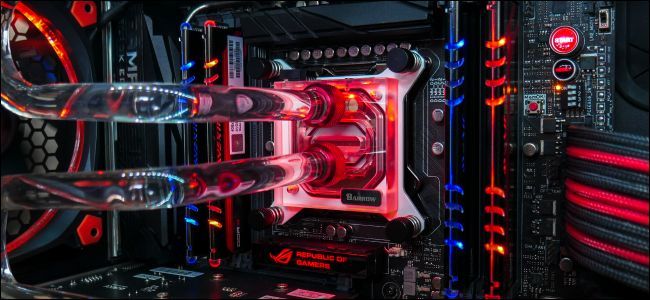
Related
Is It Bad to Have Your Desktop PC on the Floor?
Do you keep your desktop PC on the floor? Ventilation and dust might be a problem.
Disadvantages of Wall-Mounting a PC
One major disadvantage of wall-mounted PCs is that they are harder to mount and work on. Every time you want to swap out the graphics card, apply some thermal paste, plug in a new peripheral, or do basic troubleshooting, you’ll need to grab a step ladder.
Price is another factor. Wall-mounted cases tend to be on the expensive side, and your options are limited to just a few models. For instance, the Thermaltake P3 is one of the most popular. Another option is to build a DIY wall plate. However, it’ll be hard to mount everything and make neat cable management holes, and it’s virtually impossible to figure out the case’s maximum weight load.
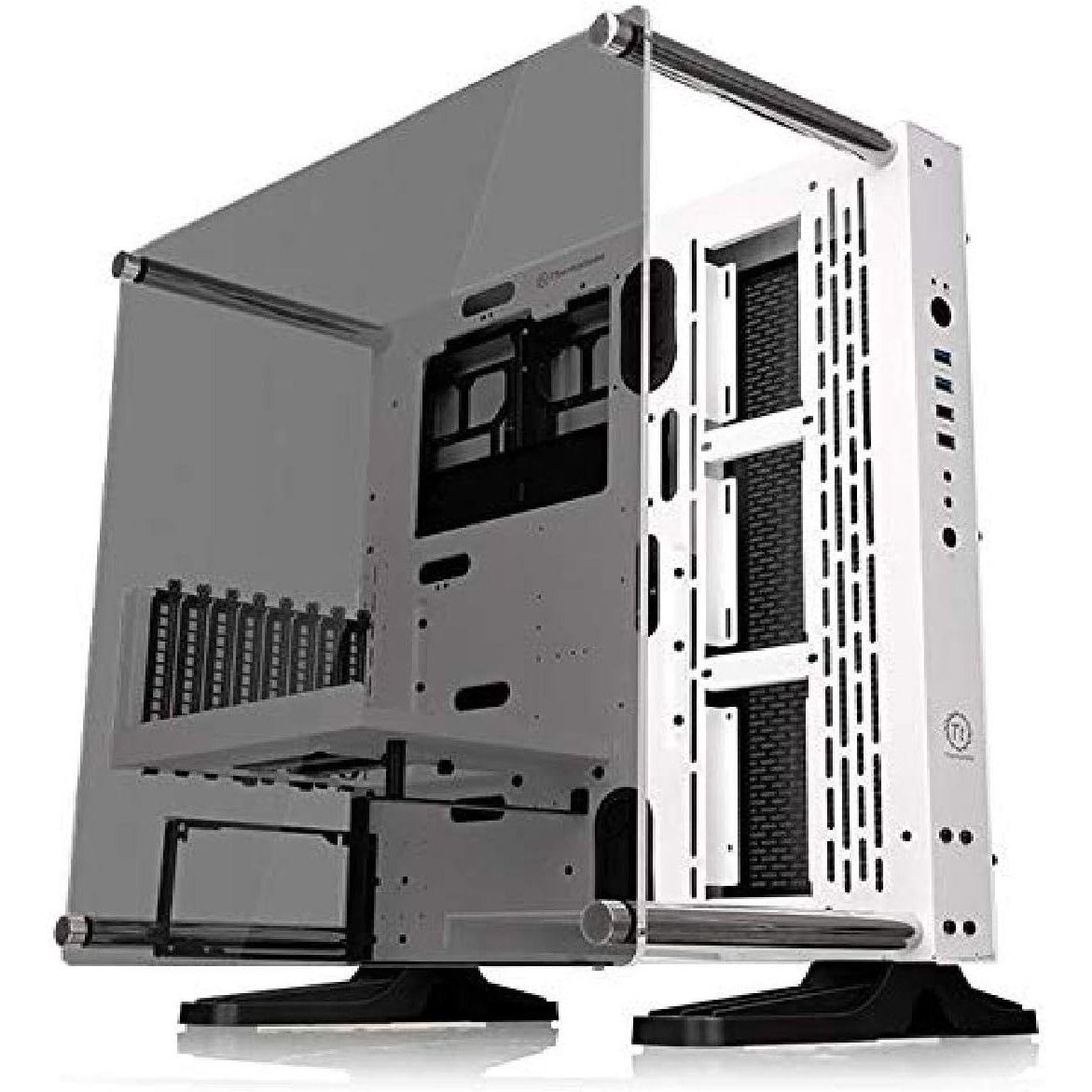
Thermaltake Core P3 TG Pro Snow
$130 $140 Save
$10
This PC case has a panoramic open view with vertical GPU mounting and a 5mm tempered glass panel for protection.
Additionally, mounting something as heavy as a PC securely to the wall is challenging, making it easier for the PC to get knocked off the wall. In the event of an earthquake, the PC might be the first thing to fall.
The last major downside is portability. While most desktop PCs never leave their home, some of us like smaller cases that are easy to bring along to a LAN party or an extended trip. This isn’t something you can even consider with a wall-mounted PC.
While wall-mounting a PC isn’t for everyone, it’s one of the coolest and most unique setups. If you don’t plan to move anytime soon, consider making your next PC build a wall-mounted one. You’ll enjoy the extra desk space just like with a floor P, but without the added dust. Most importantly, you get to display your build in a stunning way by showcasing its best side for all to see.


